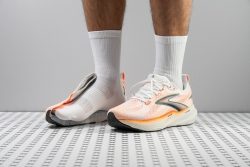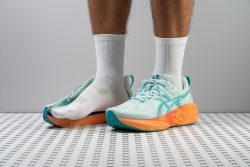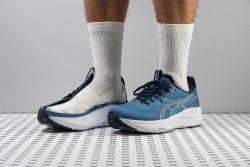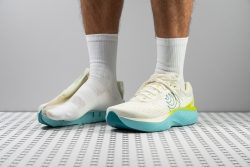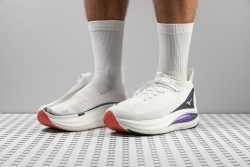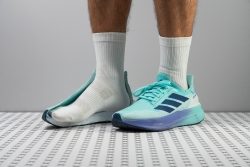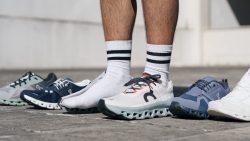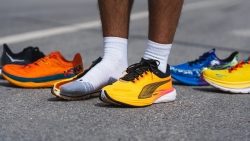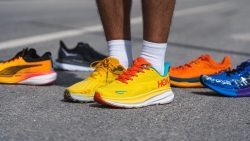7 Best Comfortable Running Shoes in 2025
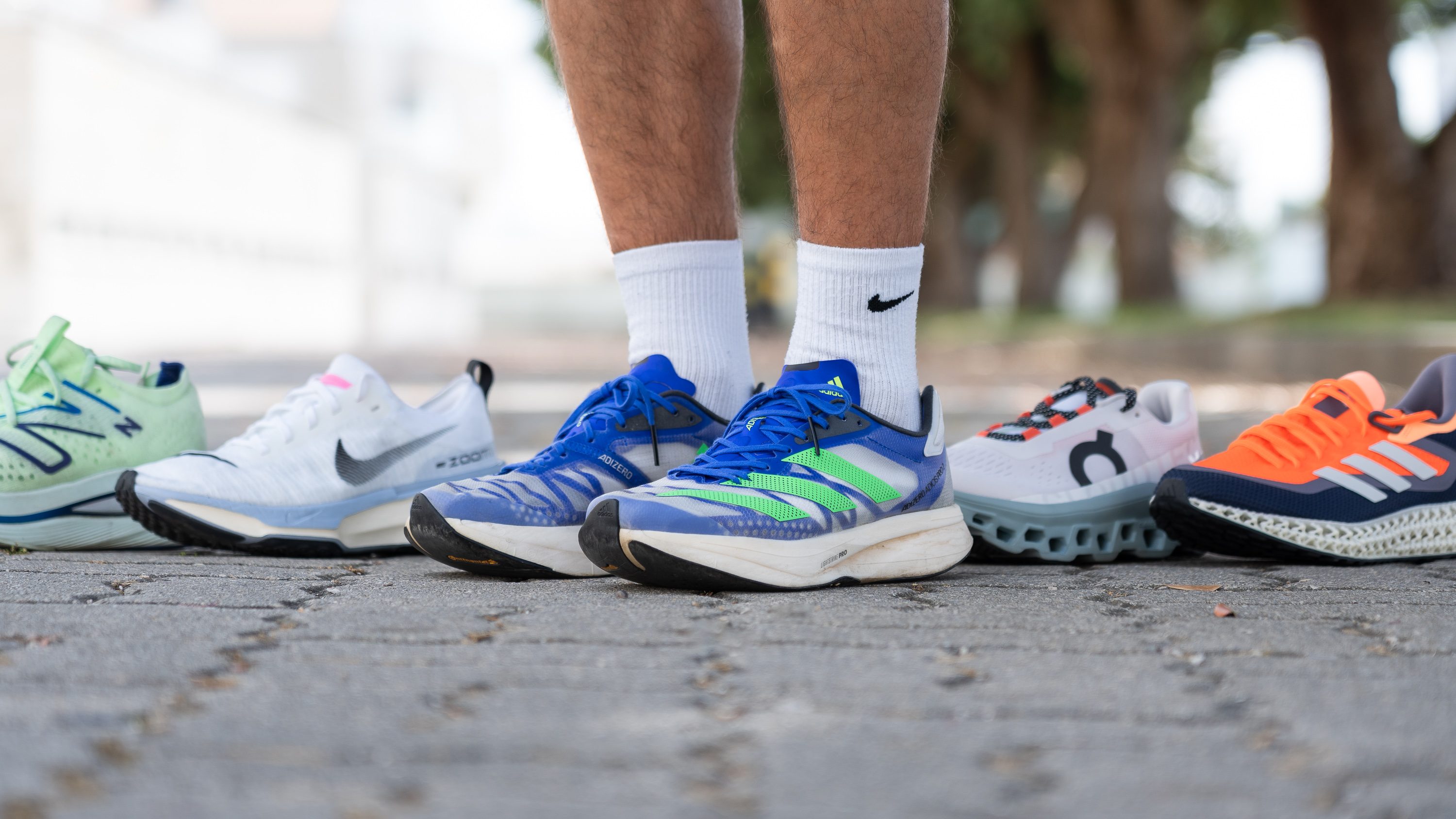
We buy shoes ourselves. We earn commissions when you buy through us, at no extra cost. Why trust us
When it comes to running shoes, comfort is king. Whether you’re a high mileage, daily runner, or weekend warrior, we all want that running shoe that delivers great comfort while running.
Whatever your running preferences or racing requirements are, there are hundreds of “comfortable” models out there from various brands. Choosing the right one can be confusing and time-consuming.
To help you find the most comfortable running shoes, we’ve handpicked the models that deliver that “ah, this-is-it” sensation during our hands-on (or, should we say, feet-on) testing. We also double-checked everything in our independent lab, where we performed standardised testing to accurately describe each shoe with over 20 data points.
Next to the top picks, we also went down the rabbit hole on the topic of comfort. What makes running shoes comfortable, how soft is too soft, is a thick, cushy tongue always a good idea, and other details that those who prioritise comfort care about. Read on!
How we test comfortable running shoes
With years of running under our belts and countless hours of lab testing, we can confidently say that we know a lot about comfortable running shoes. In this list, we’ve highlighted the models that blew us away. Here's how our BTS looks like:
- We buy all the shoes with our own money to avoid bias and brand loyalty.
- We log miles of running in each pair at wildly different paces, covering different terrain.
- We cut each shoe into pieces in our lab. We weigh and measure 30+ parameters, from shock absorption and tongue thickness to breathability and stiffness.
Best comfortable running shoes overall
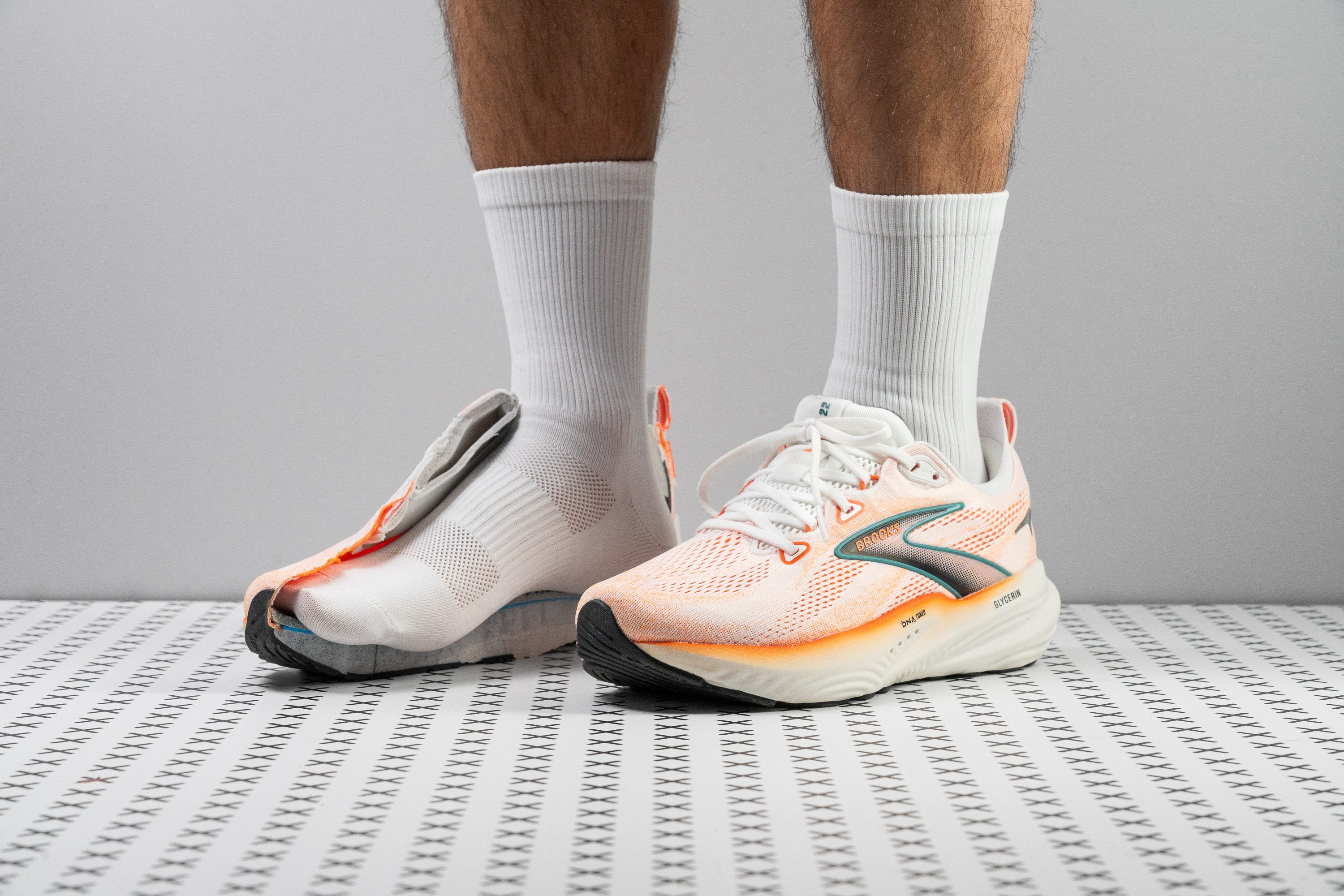




















































What makes it the best?
We crowned Brooks Glycerin 22 as the top comfortable running shoe because literally, it’s the most cushioned Glycerin we’ve set our foot on. We sank into its delightful midsole that feels protective and supportive for any distance or footstrike. As the cherry on top, its upper is delightfully breathable while its outsole received our lab's seal of approval for longevity.
We felt relaxed running in this pair as we measured a substantial 38.5/28.2 mm stack, providing excellent impact protection. The midsole features a soft 17.3 HA layer mostly in the forefoot for comfort, and a firmer 24.4 HA layer in the midfoot and heel for stability. We ran without counting the miles because of the shoe's unparalleled comfort and support.
The breathable and plush upper was truly a breath of fresh air. Our smoke test confirms it’s one of the most breathable trainers we tested when it earned the perfect 5/5 score.
While the cushioning ensures comfort for miles, the outsole ensures it can survive several training blocks. With an above-average 84.0 HC durometer measurement and minimal damage against our Dremel (0.5 mm vs. 1.0 mm average), it erased any concerns we had with durability.
However, those who equate comfort with a natural ride may be disappointed with Glycerin 22’s noticeably stiffer build than previous versions. Those who prefer highly flexible shoes should try other options.
Pros
- DNA Tuned improves shock absorption
- Stable ride
- Highly-breathable upper
- Increased stack height
- All-around comfort
- First-class durability
- Perfect for everyday miles
- Awesome for heel strikers
- Great as an everyday shoe
Cons
- Needs to lose some weight
- Low toebox height
- Price increase
- Not the most energetic ride
Best daily training running shoes for comfort
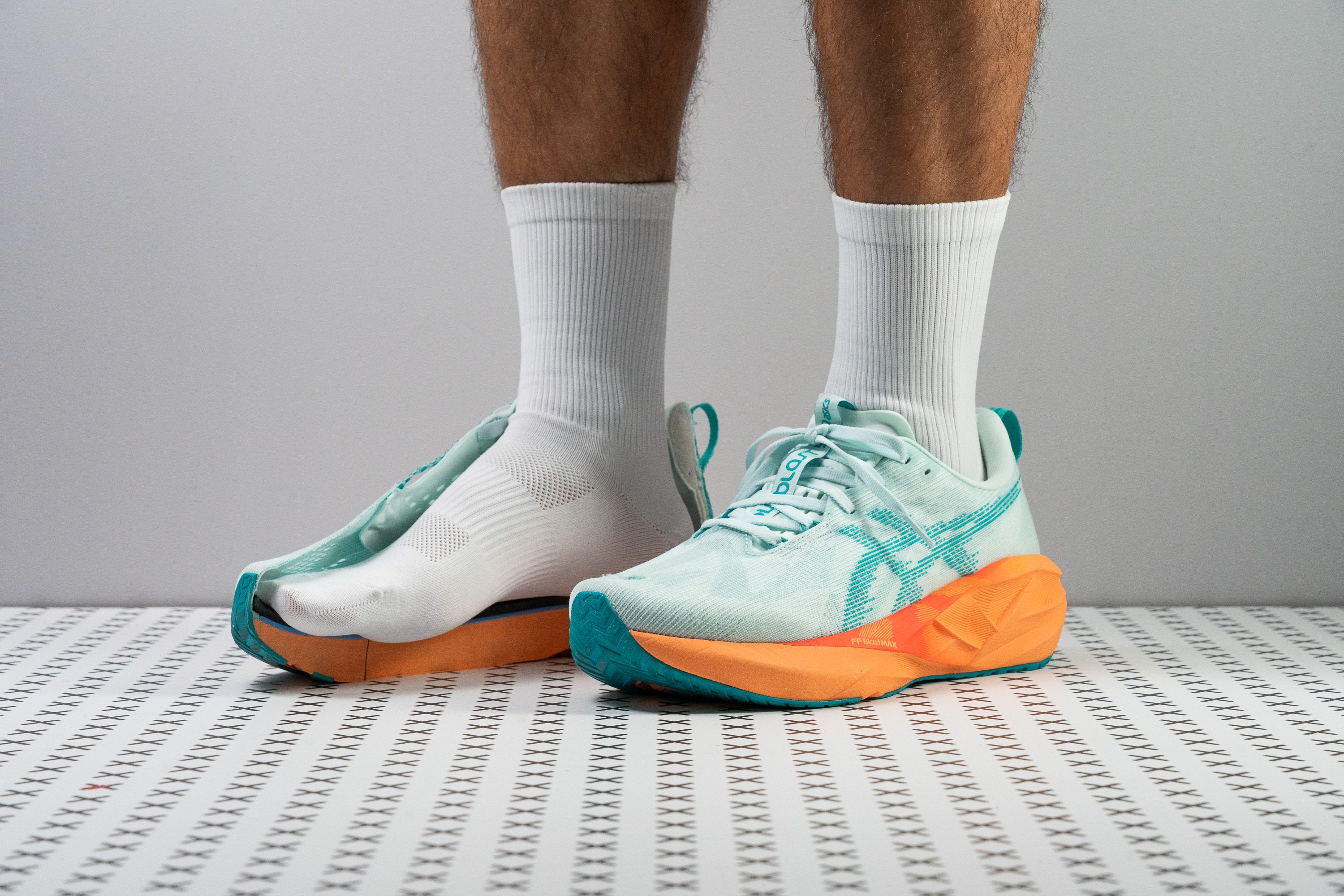























































What makes it the best?
Our lab and field tests agree: Novablast 5 belongs to the cream of the crop, deserving the best daily trainer title among the most comfortable running shoes. Its light feel and generous cushioning are so delightful with a springy sensation to take us to any pace and distance we want.
Our feet are spoiled with uber-plush foam! We feel great from short to long distances and on slower to quicker paces with the peppy midsole. In the lab, we pressed our durometer into its cushion and it emerged 38.4% softer than average. Not only is it plush, but rises to an above-average stack height of 40.9/33.5 mm! Our feet felt protected no matter where we landed.
Despite its monstrous build, it gives us a sense of sure-footedness since the height is offset by a vast 122.3/97.6 mm platform. Its wide, and therefore stable, midsole keeps our feet from toppling over while having a bouncy run.
Novablast 5 feels surprisingly light at 9.0 oz (254g), even if it didn’t look that way. On average, daily trainers weigh 9.7 oz (274g). Adding to the fluid feeling is the unresisting midsole, which our bend test confirms to be 32.2% more flexible than average.
What didn’t feel so airy was the mesh upper. With a subpar breathability score of 3/5, it lacks the maximum ventilation needed for hot and humid summer runs.
Pros
- Improved energy return with FF Blast MAX foam
- Plushiest foam in a Novablast yet
- Keeps the same price as v4
- Higher stack height for extra cushioning
- Enhanced flexibility
- Lighter than its predecessor
- Best Novablast ever for wide feet
- Exceptional weight-to-cushion balance
- Works for short, medium and long runs
Cons
- Breathability could be improved
- Toebox durability
- Toebox durability
Best comfortable running shoes for race
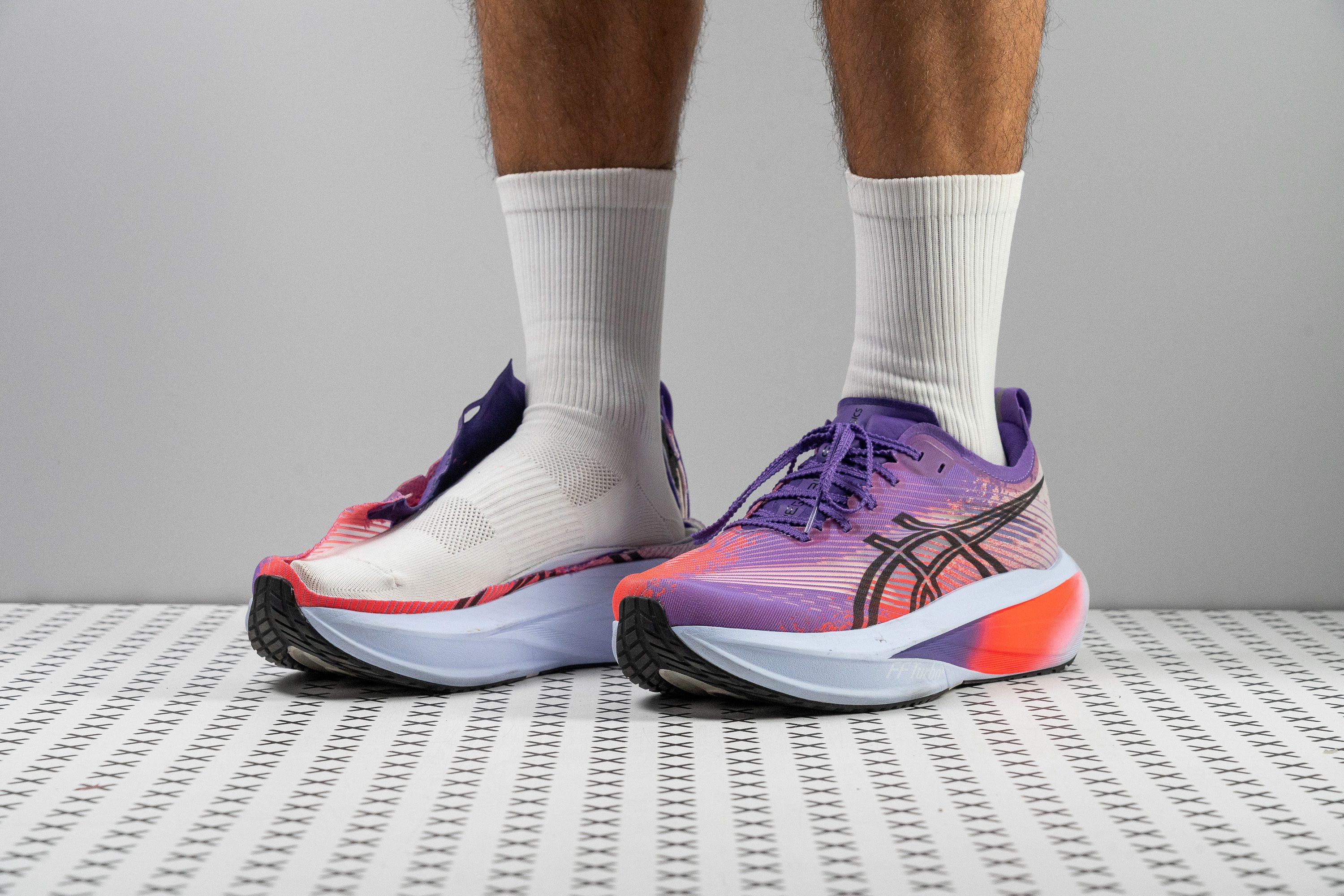
















































What makes it the best?
The ASICS Megablast gave us the extra edge to power through our fastest and farthest runs without sacrificing comfort and agility. It’s amazing how exceptionally smooth yet electrifying the ride was in its lightweight package, making it our ultimate comfortable racer in the lab.
Every time we put our foot down, the midsole would return vibrant energy immediately. This kept our momentum strong and encouraged a higher cadence—all leading to a faster pace with less effort. Its unmatched responsiveness translated into high energy return scores of 73.0% in the heel and 73.8% in the forefoot.
It was delightful to run with a lighter shoe at only 7.8 oz (218g) vs. the 9.3 oz (265g) average. We’re amazed at how it kept its weight to a minimum despite the maximum cushioning.
Rising to a jaw-dropping 45.1/35.2 mm, Megablast is packed with leg-saving comfort. It has a shock-absorbing capacity that blew us away, returning 160 SA in the rear and 144 SA in the front. Any harshness of the ground is completely erased underfoot.
With its 9.9 mm drop, Megablast’s transitions will feel more seamless for rear strikers. Mid-to-forefoot runners should look for mid-drop racers to suit their running style.
Pros
- Outstanding energy return
- Exceptional impact protection
- Durable, grippy outsole rubber
- Astonishingly low weight
- Performs at any pace and distance
- Breathable, lightweight upper
- High-quality materials from heel to toe
- Suitable for all footstrikes
- Top performance without a carbon plate
Cons
- Extremely expensive for a training shoe
- Limited outsole coverage
- Poor toebox durability
Best comfortable stability running shoes
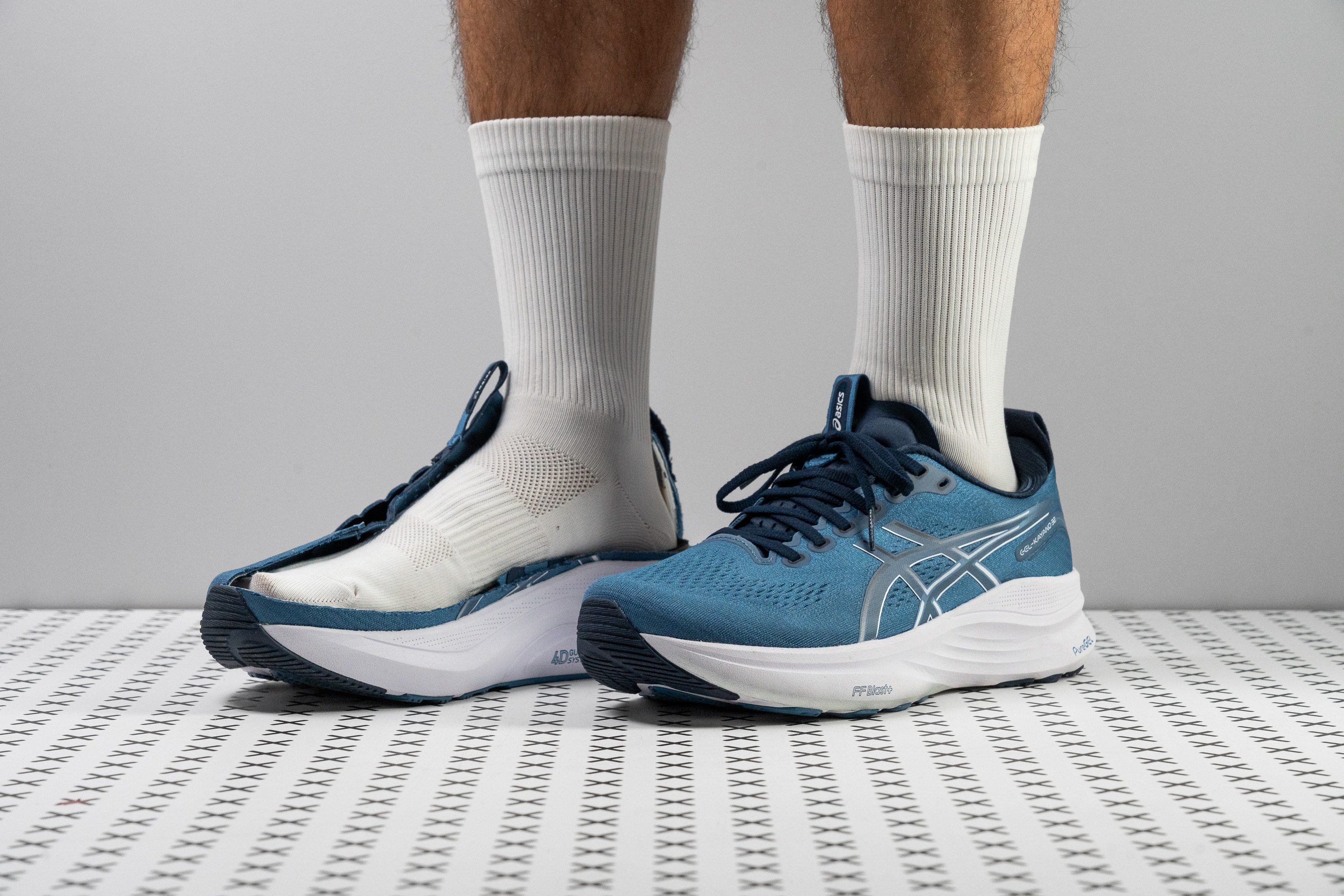













































What makes it the best?
The ASICS Gel Kayano 32 exceeds the traditional stability shoe by proving that comfort and stability can blend. Our runs remain relaxed because the shoe takes care of adaptive support, superb impact protection, and unwavering traction. Even our lab results validate the surefootedness we experienced.
This model features the highly innovative 4D Guidance System—a soft foam positioned under the heel for custom support, adjusting as we use the shoe further. What also ensures each stride remains stable is the vast landing base, which our calliper confirms is a wide 119.8/97.2 mm. That’s 5.5/6.5 mm above average!
It’s amazing how we felt in control even on wet streets. In our traction test, the ASICSGRIP rubber returned one of the highest ratings we’ve seen: at 0.84, it’s 82.6% gripper than average!
Topping off the ultimate comfortable experience is the plush FF Blast+ ECO foam. With an impressive 39.9 mm heel height and the PureGEL inside it, each landing feels pillowy without any trace of impact. Our shock absorption confirms its cosy sensation with a high rating of 133 SA.
Despite its luxurious comfort and effective support features, the Gel Kayano 32 is on the heavier side at 10.4 oz (295g), which may not suit those seeking a lightweight option.
Pros
- Amazing shock absorption
- Plush and breathable upper
- Made to last
- Dependable for most pronators
- Heavy-duty outsole with excellent grip
- Stable as a table
- Pillow-soft heel padding
- Improved fit
- Excellent build quality
Cons
- Not for soft-foam lovers
- Bad energy return
- Overpriced in Europe
Best comfortable running shoes for wide feet
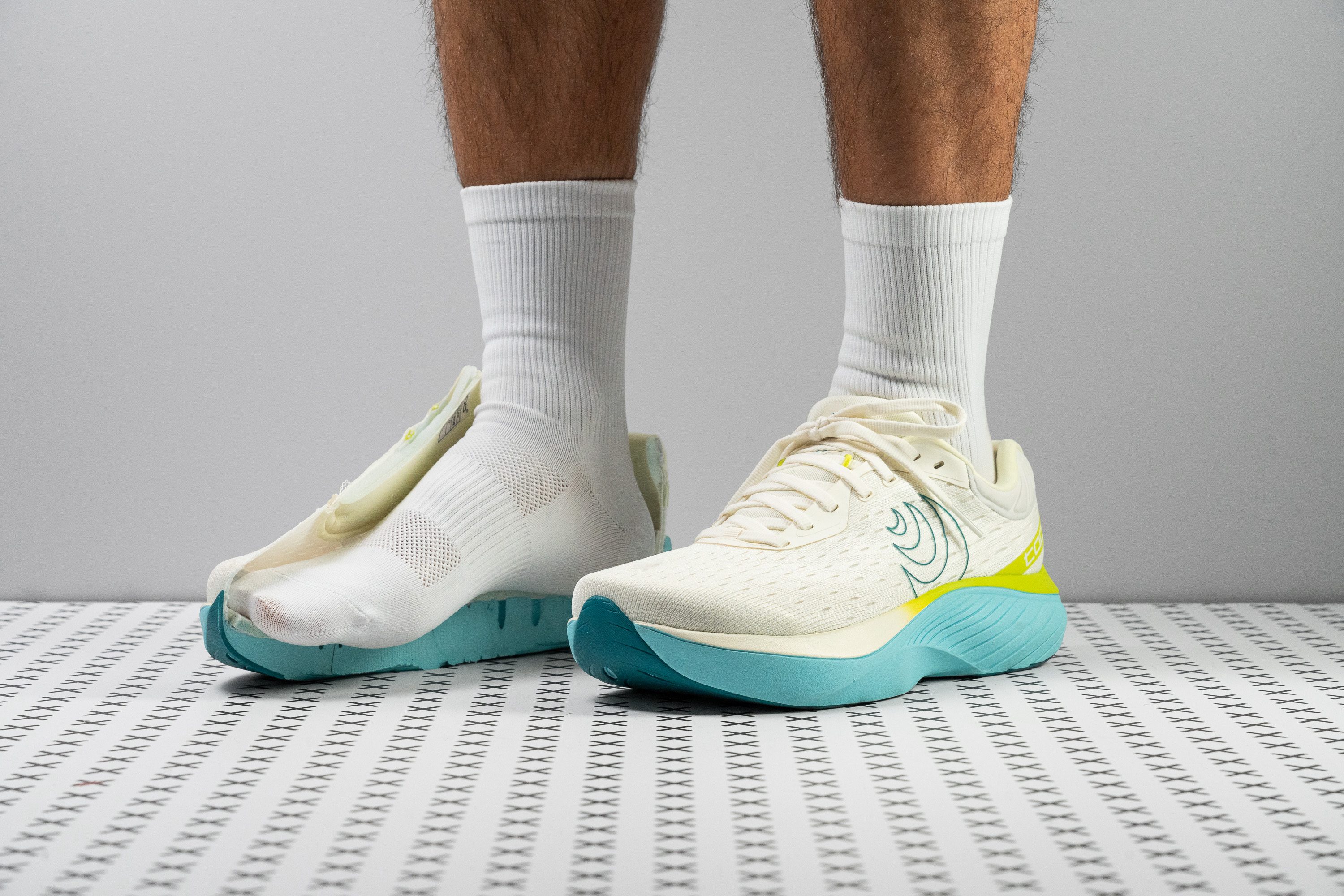

















































What makes it the best?
Those of us with wide feet found our ultimate comfort shoe: the Topo Atmos. Miles of running and hours of lab tests confirm its effortless feel is beyond compare, seamlessly blending a cushioned, surefooted, and lightweight ride. It feels forgiving from its fit to its shock absorption.
Using our gel mould, we measured the widest part of the shoe at 98.5 mm. Compared to the 95.1 mm average, we experienced less pressure on our feet and had more room to breathe. We found it accommodating enough for runners with bunions or broad feet.
At its core, we unveiled a divine cushion that feels gentle with every touchdown. It reaches an impressive height of 37.8/32.5 mm, delivering solid shock absorption scores of 130/122 SA. It keeps our muscles well-protected from impact. To secure our strides, Atmos widens its base to 119.1/96.8 mm.
We found this shoe versatile even for walking because of its weightlessness, with only a 9.7 oz (275g) build. This result was a pleasant surprise considering its generous dimensions.
However, its comfort shines more for midfoot and forefoot strikers. With its low 5.3 mm drop, transitions may feel unnatural for rear strikers.
Pros
- Max-cushioned comfort
- Ultra-spacious toebox
- Stable ride
- Premium Ortholite footbed
- Midfoot-friendly geometry
- Lightweight for its huge size
- Great for easy long runs
- No heel slippage
Cons
- Lacks energy return
- Not for narrow-footed runners
- Could be a bit more flexible
- Not the best for walking
Comfortable trail running shoes with the best shock absorption
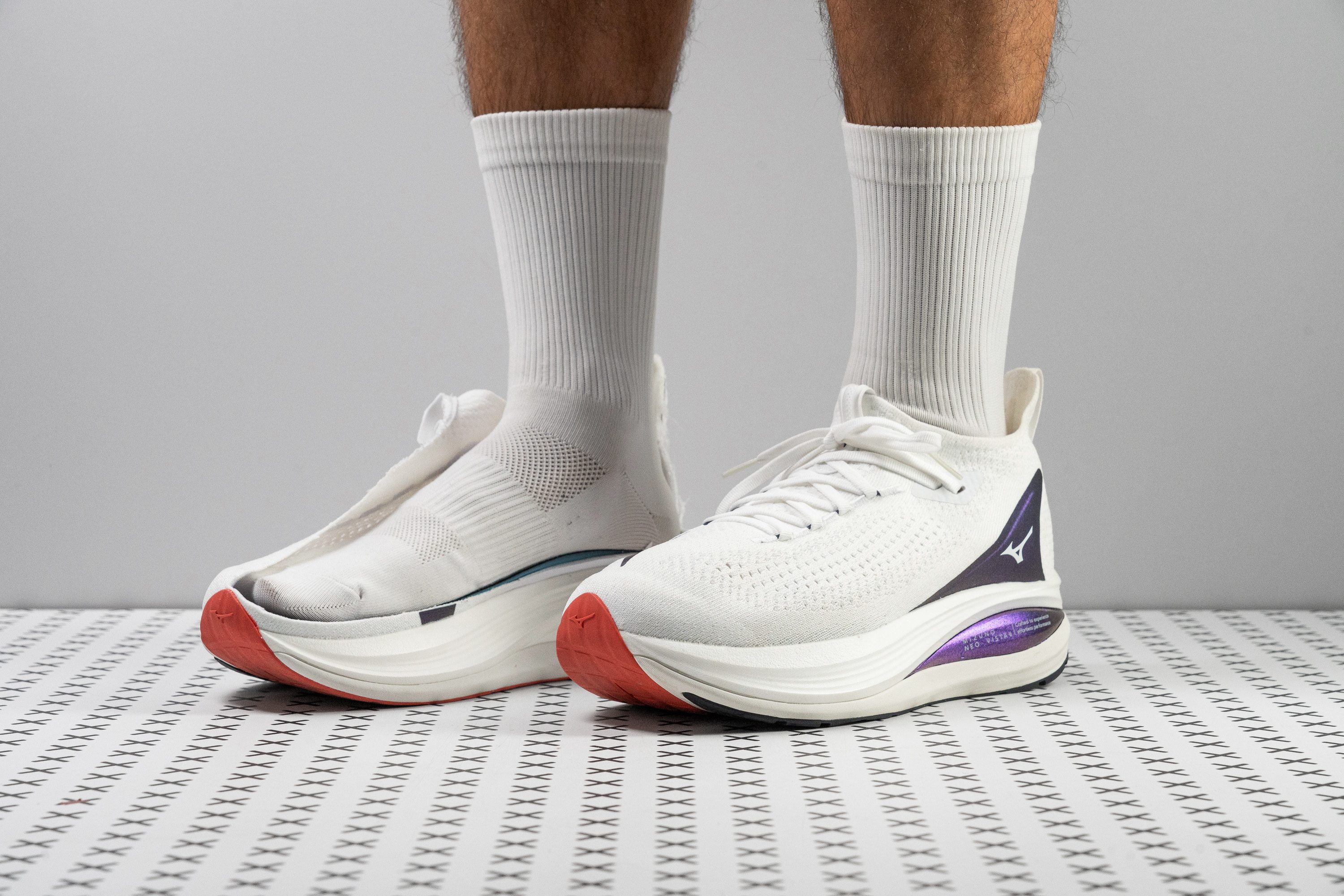
















































What makes it the best?
The Mizuno Neo Vista 2 took our runs to new heights, literally with its generous cushioning and figuratively with its unmatched comfort. It offers freedom of movement in a lightweight package, which all leads to lasting comfort. Its leg-saving foam stood out in our lab assessments, making it our comfortable running shoe with the best shock absorption.
As soon as we put on the shoes, we knew they prioritised taking care of our legs and helping them recover. Neo Vista 2 is packed with abundant cushioning, skyrocketing to a stack height of 46.0/37.5 mm, the forefoot alone being taller than the average 34.8 mm heel stack in our lab.
Testing for shock absorption, the heel returned 170 SA and the forefoot 137 SA. Comparing these figures to the average, Neo Vista 2 reduces the impact of road running by 31.8% and 29.2%, respectively. The effect is felt with every step, multiplied by how many strides we take during our runs—it really makes a huge difference!
Despite its thick stack, it keeps the ride smooth and easy. It weighs only 9.3 oz (264g) and maintains a flexibility rating 11.2% above average in our bend test. These elements create a soothing experience that boosts comfort for long hours of wear.
However, its ultra-soft midsole lacks support for those with pronation issues. Runners seeking stability won’t find that here.
Pros
- Massive stack height
- Super-plush Enerzy NXT foam
- Perfect for long runs
- Lightweight for its huge size
- Good durability
- Breathable knit upper
- Roomy toebox height
- Insanely fun!
Cons
- Not enough energy return
- Price hike feels unjustified
- Not stable for heel strikers
Comfortable running shoes with the best durability



















































What makes it the best?
The Adidas Ultraboost 5X delivers a responsive and stable experience that not a lot of shoes can offer. Comfort skyrockets with its flexible midsole, yet it stands out in the lab with its strong wear resistance, making it our best durable, comfortable running shoe.
Ultraboost 5X looks practically new after our wear tests. In our abrasion test, it only showed a minimal 0.4 mm damage, 60.0% less than average. We also tested the toebox and heel padding with our Dremel, and they impressed us with the maximum 5/5 durability scores!
Ultraboost 5X has the comfort of a daily trainer, as it emerges 25.0% more flexible than average. But its responsive nature, particularly in the forefoot, puts it in a more elite group. Our energy return test confirms this with a solid 70.1% score.
To avoid triggering any pain from missteps, the Torsion System enhances stability by increasing the shoe’s resistance to lateral movements. In our torsional rigidity assessment, it reached a high 4/5 score.
Note that the upper has limited vertical room. The knit upper stretches and sits comfortably on top of our toes. If this is a bother, we recommend finding a pair with a more spacious toebox.
Pros
- Works well as a casual sneaker too
- Premium, high-quality materials throughout
- Stretchy, roomy upper
- Fantastic energy return
- Built-to-last durability
- Best Ultraboost version to date
- Stable for heel strikers
- Increased stack height
- Noticeable weight reduction
- Grips very well
Cons
- Steep price
- Ventilation falls short of expectations
- Limited to slower paces
- Less stack height than advertised
What makes a running shoe comfortable
In most cases, running shoes are considered comfortable when they have:
- Soft cushioning: we recommend midsoles that scored 20 HA or lower on our lab test
- Great shock absorption: 120 SA or more to make the landings super protective!
- A lot of padding (tongue, heel)
- Toebox that does not cramp the toes
We will cover each of these features below.
Soft shoes = comfy shoes
The softness of running shoes is measured with a durometer. We cut the shoes in half and stick the durometer needle into the foam. Lower numbers on the durometer mean it’s a softer foam, while the larger number mean it’s a firmer foam.
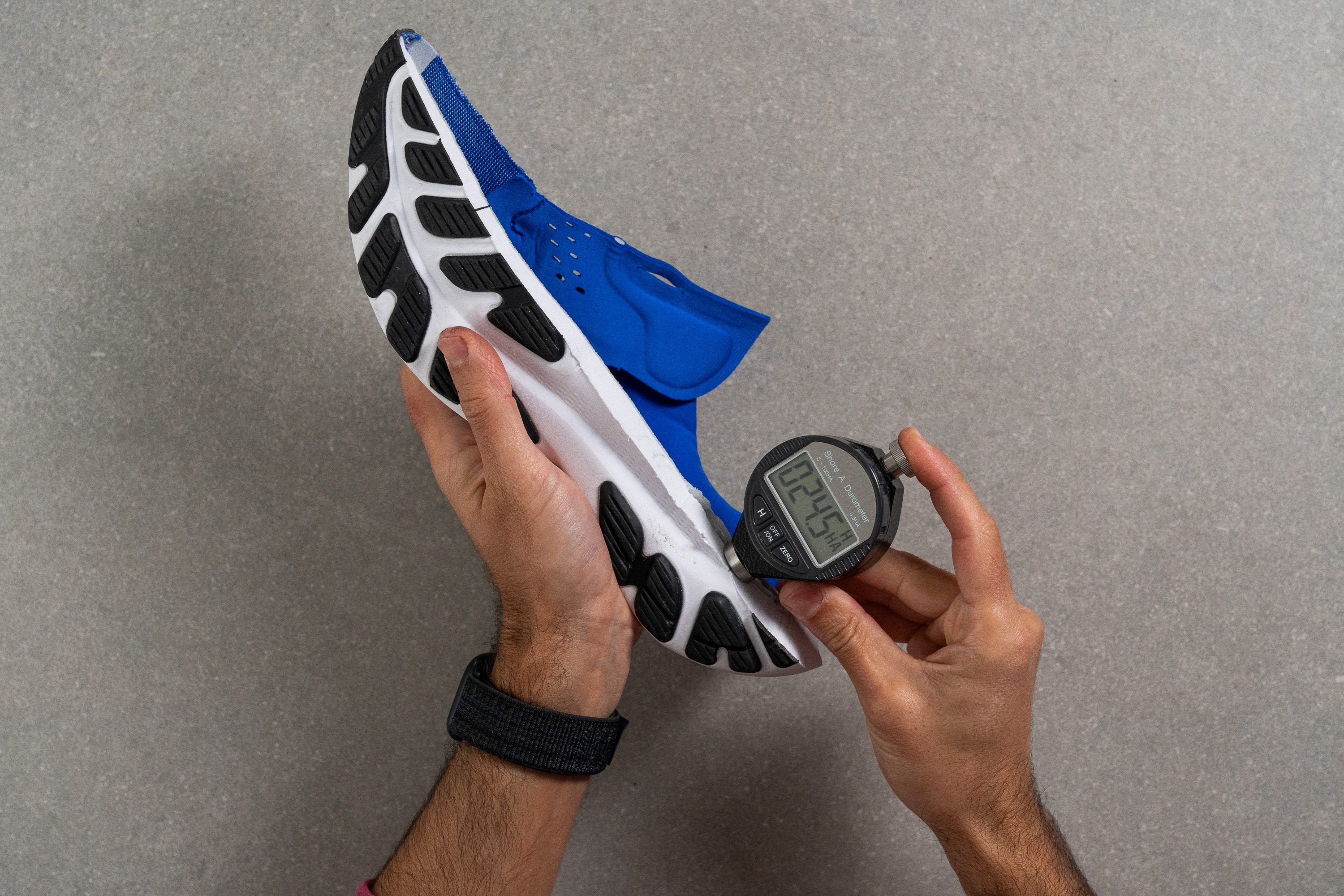
For comfortable running shoes, we recommend midsoles that scored 20 on Shore A durometer or less.
However, the experienced level of softness can be changed to a certain degree with a thick, soft insole.
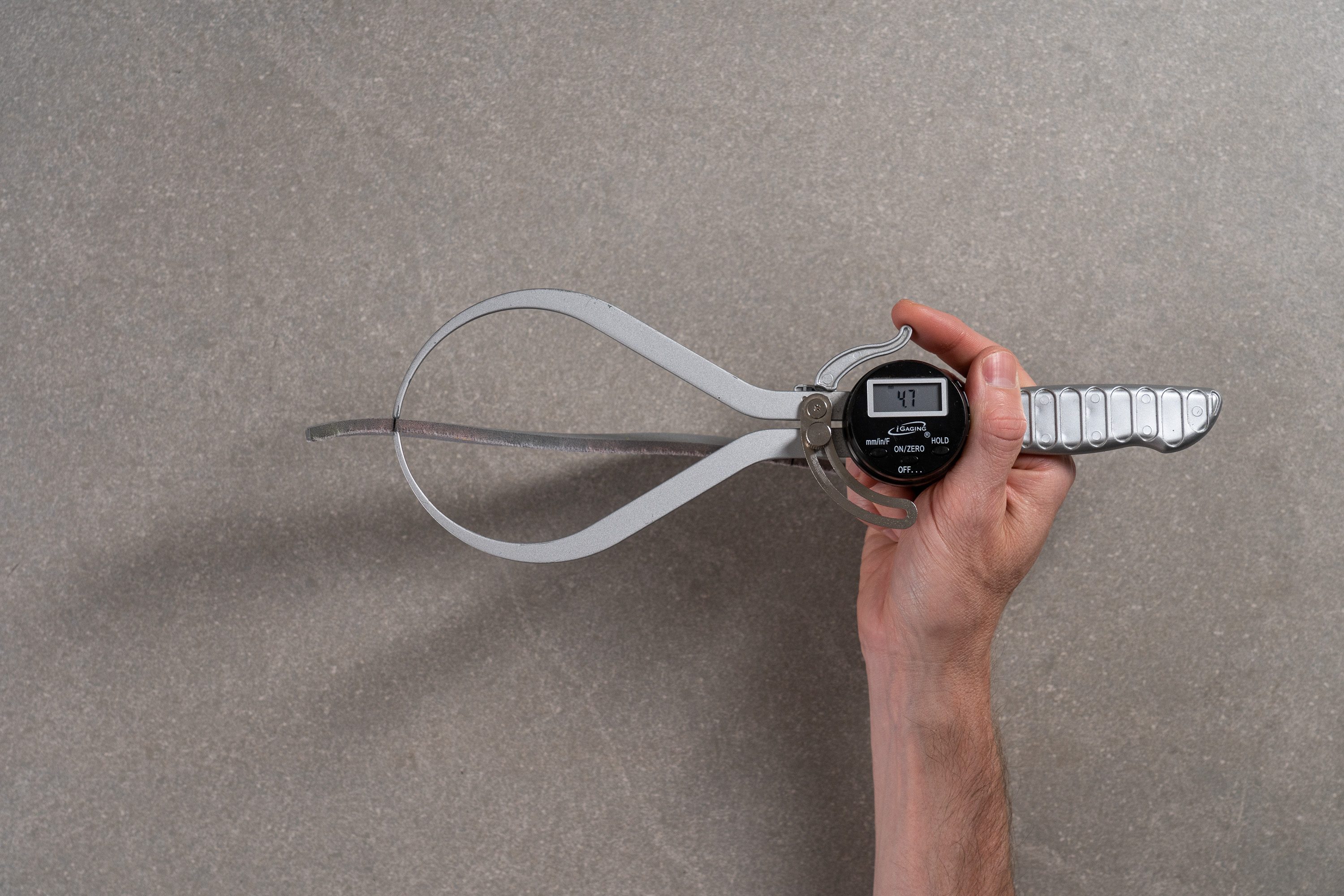
So, if you’re not satisfied with the softness level of your shoe, you can try swapping the insole. Or simply look for softer shoes immediately by looking at our lab data before buying the shoe.
Shock absorption of comfortable running shoes
While it's great to have soft running shoes, that softness can come with a downside of having a low shock absorption. And when that happens, we're most likely dealing with premature fatigue and foot pain. On the other hand, when shock absorption is high, it means that the midsole is doing a great job of dampening the impact at each landing. This way, less stress is sent to our legs and that, of course, feels comfortable!
We perform this test both at the heel and at the forefoot. This allows runners to look up the numbers that they prioritise, depending on their foot strike. When it comes to heel strikers, we recommend a shock absorption of at least 120 SA.
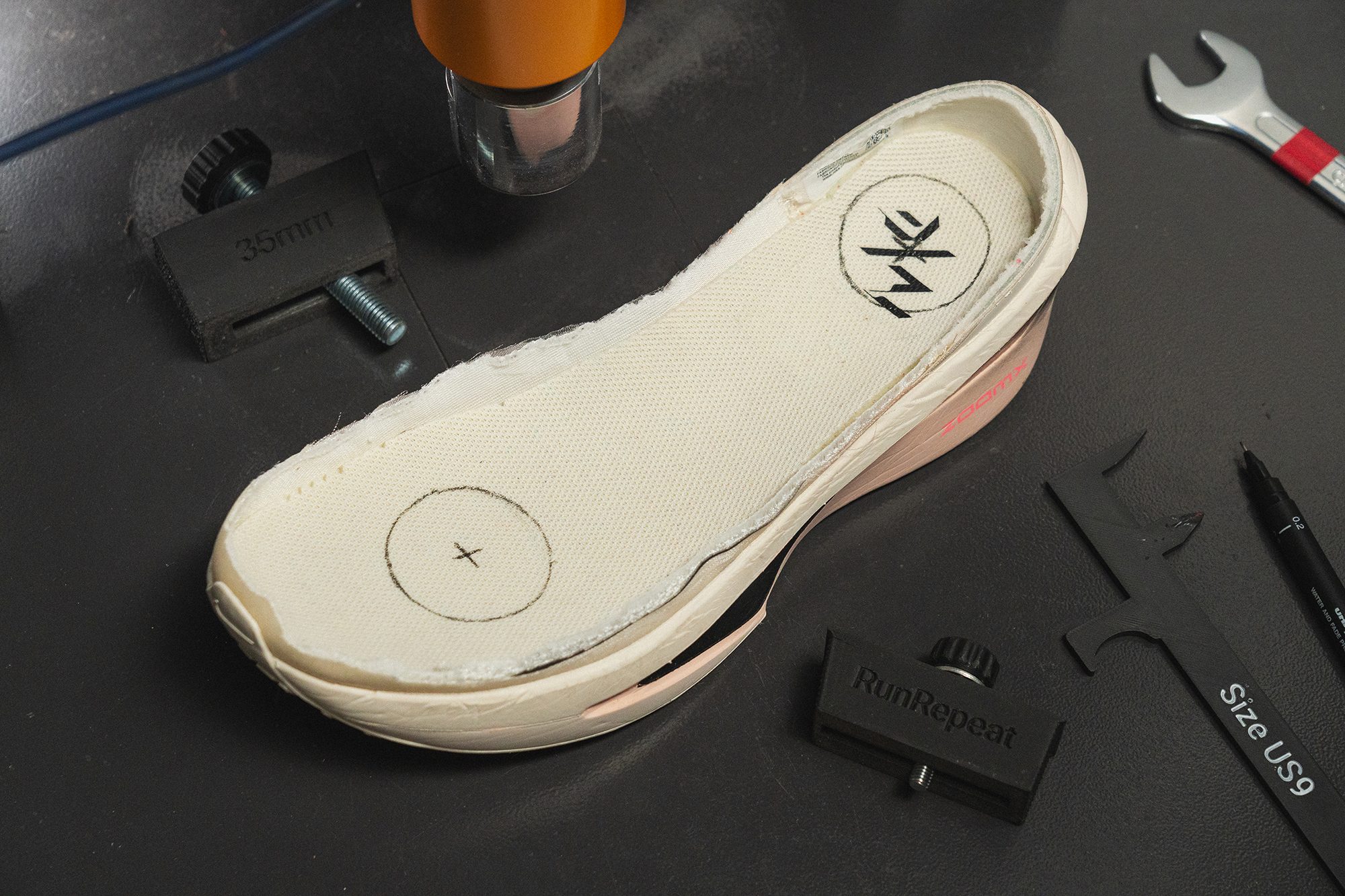
Padding in comfortable running shoes
We don’t enjoy the softness underfoot only, but all around. And that means many runners prefer having a padded tongue, padded heel, maybe even a knit upper.
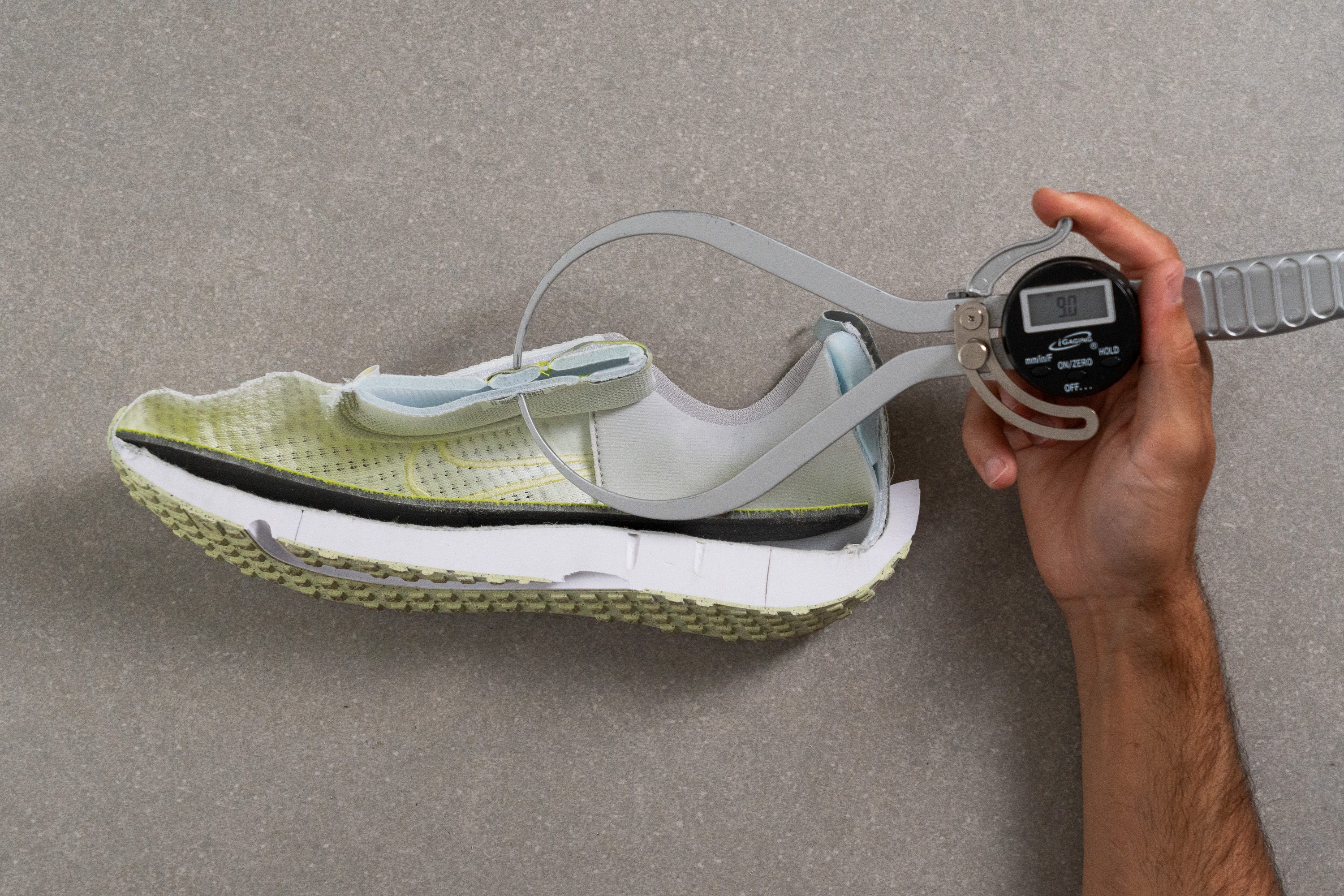
The thicker the tongue, the lower the possibility of a lace bite. Lace bite happens when you tighten the laces, but the tongue is too thin, so you feel all the pressure on your instep.

The downside of having a very thick tongue is that your sock could accumulate sweat underneath it.

Most often, race shoes have minimal or no padding because they are trying to shed any excess weight. In daily trainers and especially in stability shoes we see a lot of padding and layers that enhance comfort. When it comes to the heel, their purpose is also to stabilise the heel.

While not padding per se, the knit upper feels padded and is much softer than the mesh upper. This is something to take into consideration if your feet are very sensitive to chafing. However, knit upper breathes less and takes more time to dry out.
Goodbye, cramped toes!
When toes are cramped, comfort is thrown out the window. There are many toes and toeboxes in different shapes, and it’s important to find the perfect match.
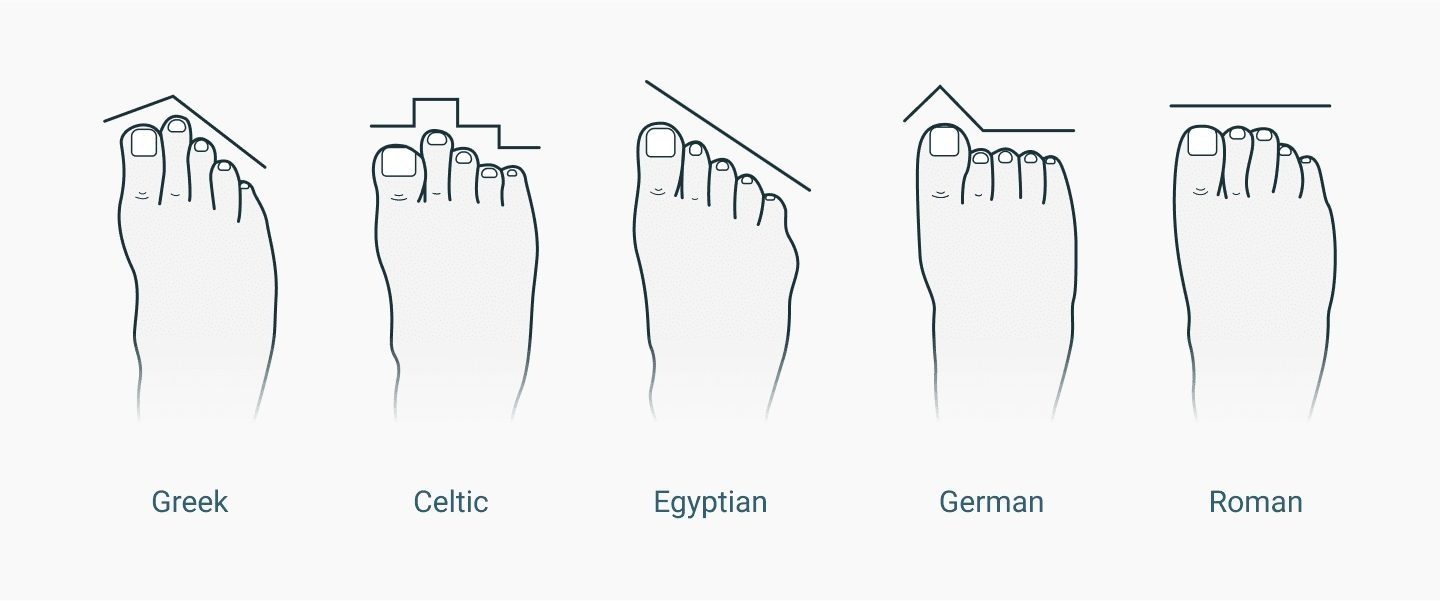
When we measure the width, we focus on 2 areas: where the shoe is the widest and at the big toe. Some runners need one of those measurements to be very wide, others need both.
For exact measurements, we need an exact representation of the toebox volume. For this purpose, we use a gel mould that we specifically created in our lab
Once the gel has frozen in the shoe, we can take it out and work with the mould to take measurements.
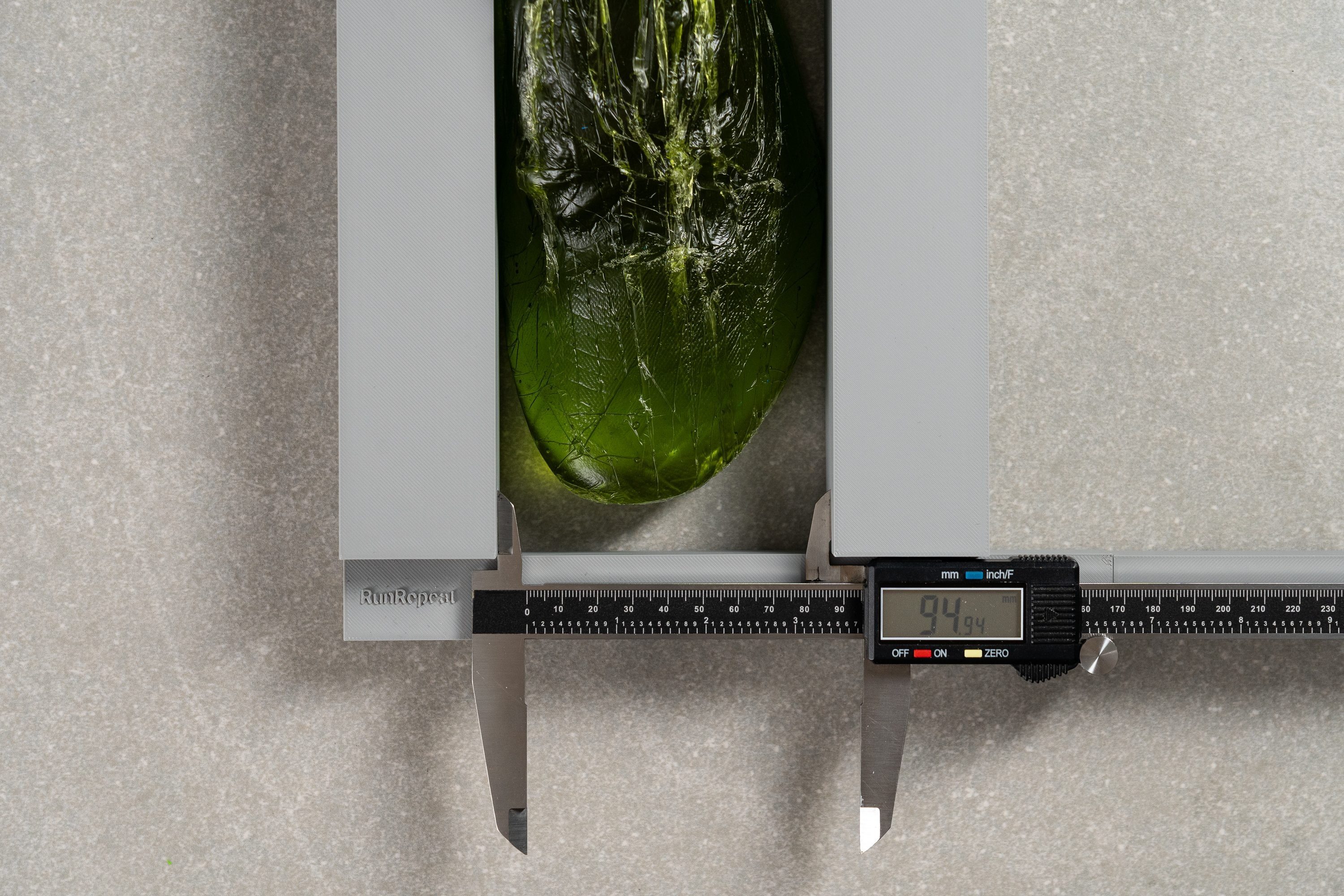
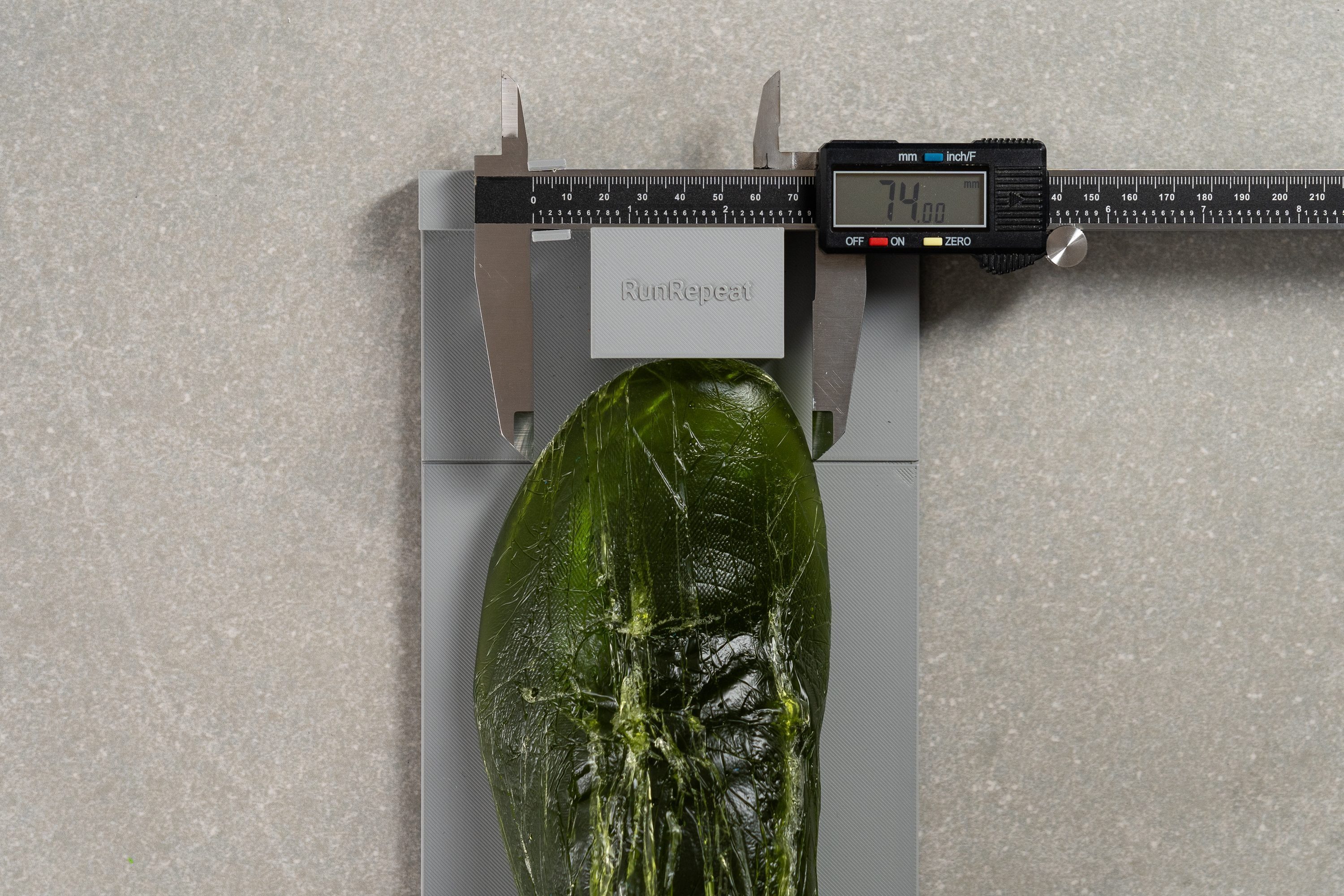
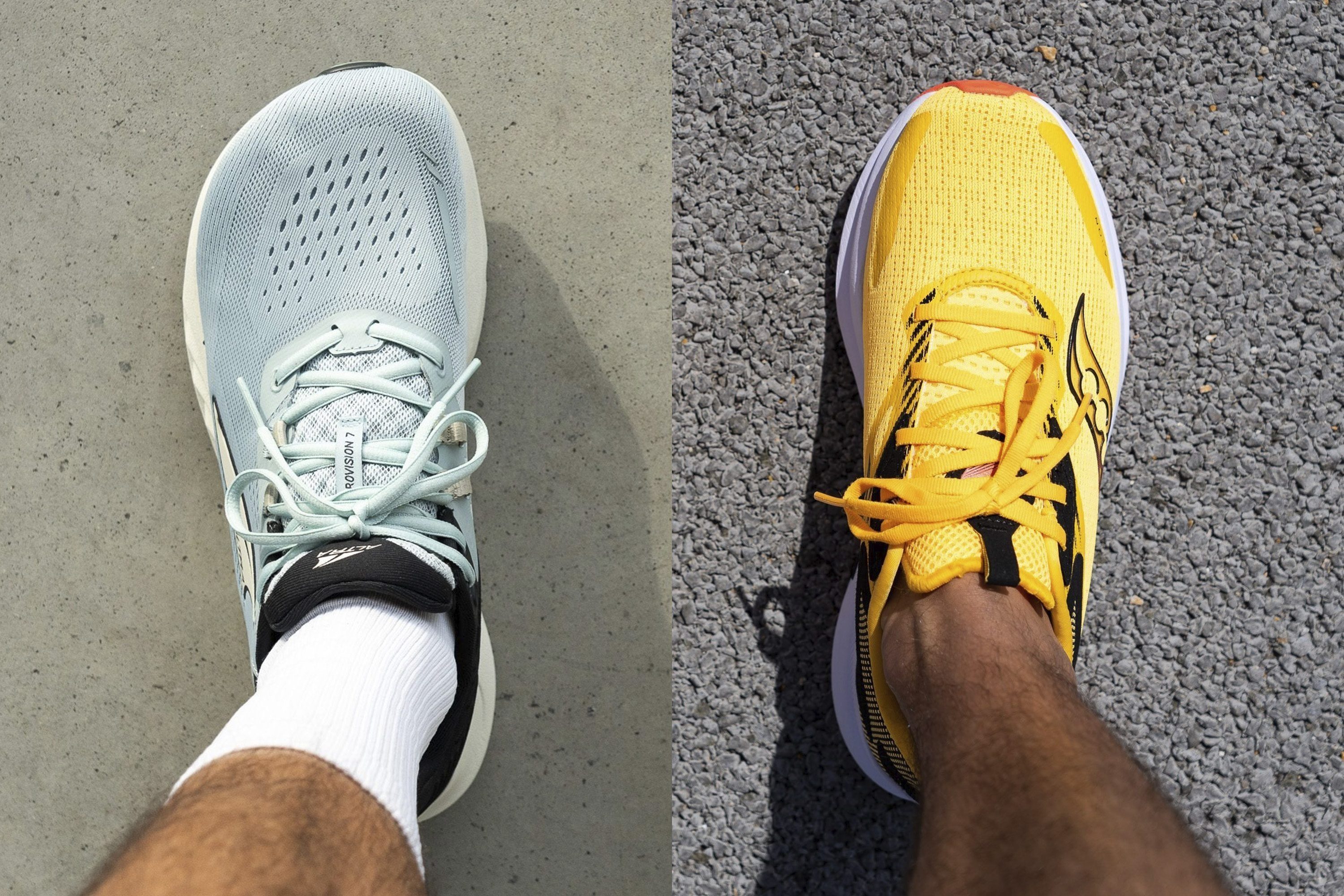
Furthermore, we don't focus only on horizontal space. For runners who find tall toeboxes to be extra comfortable, we offer a selection of comfortable running shoes with the highest toeboxes! We're able to do so because of our gel mould.

Comfy in winter?!
Just because shoes are soft at room temperature does not mean they will stay as soft (comfortable) in winter. To test this, we put shoes in the freezer and then measure again their softness and flexibility.

The smaller the % change in these 2 measurements, at the room temp and after spending time in the freezer, the better the experience: shoes won’t firm up and stiffen up a lot.

